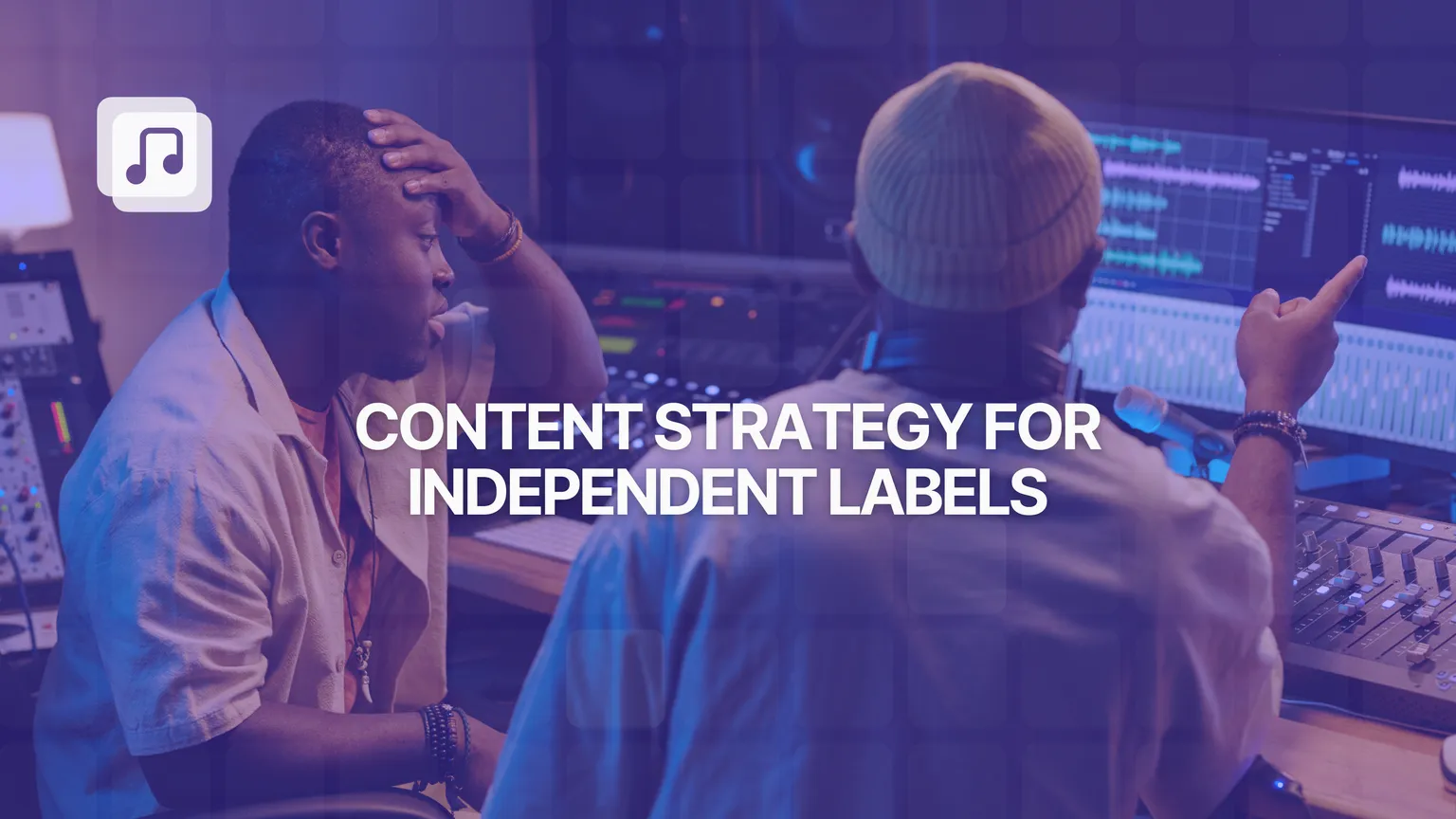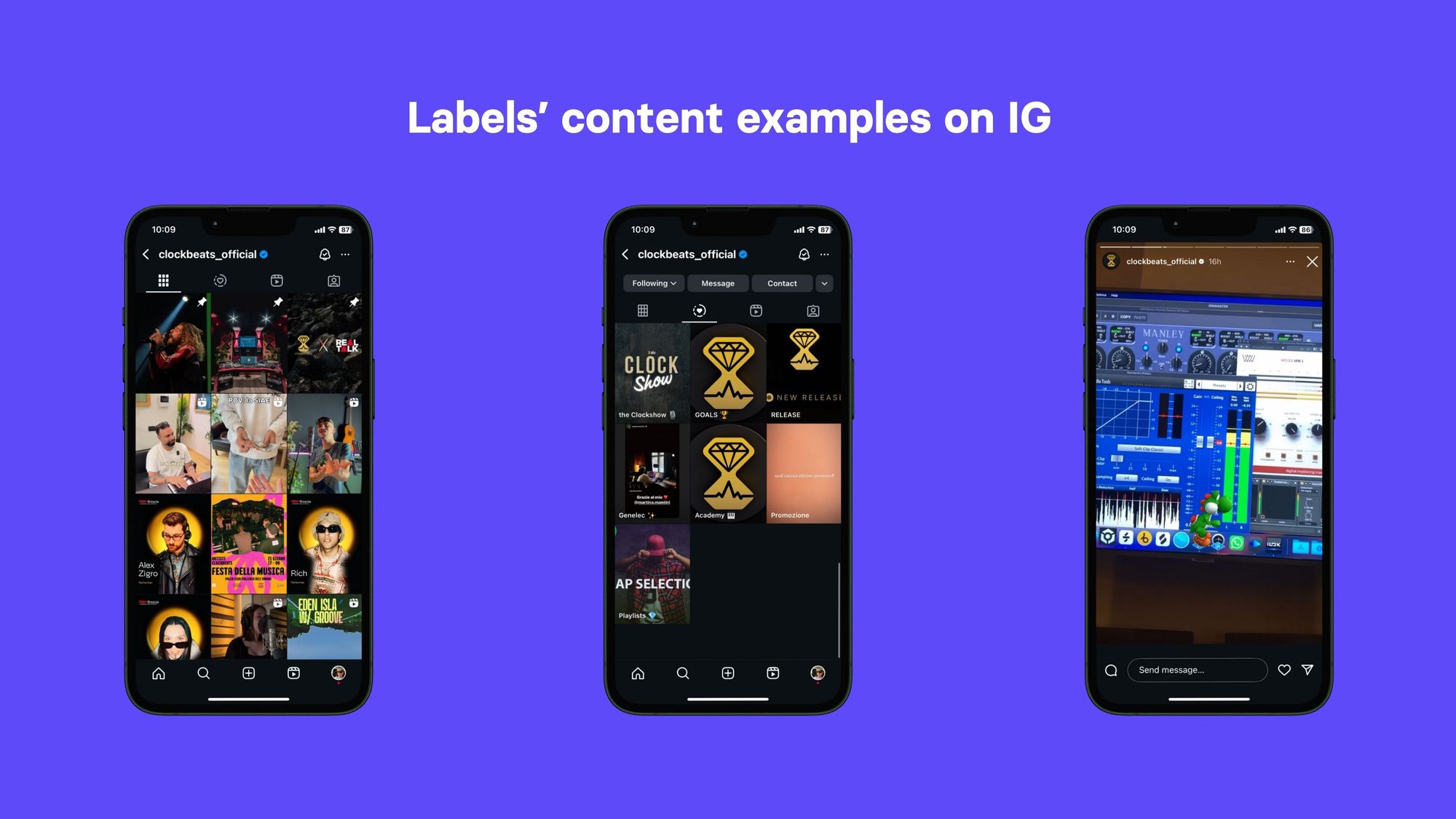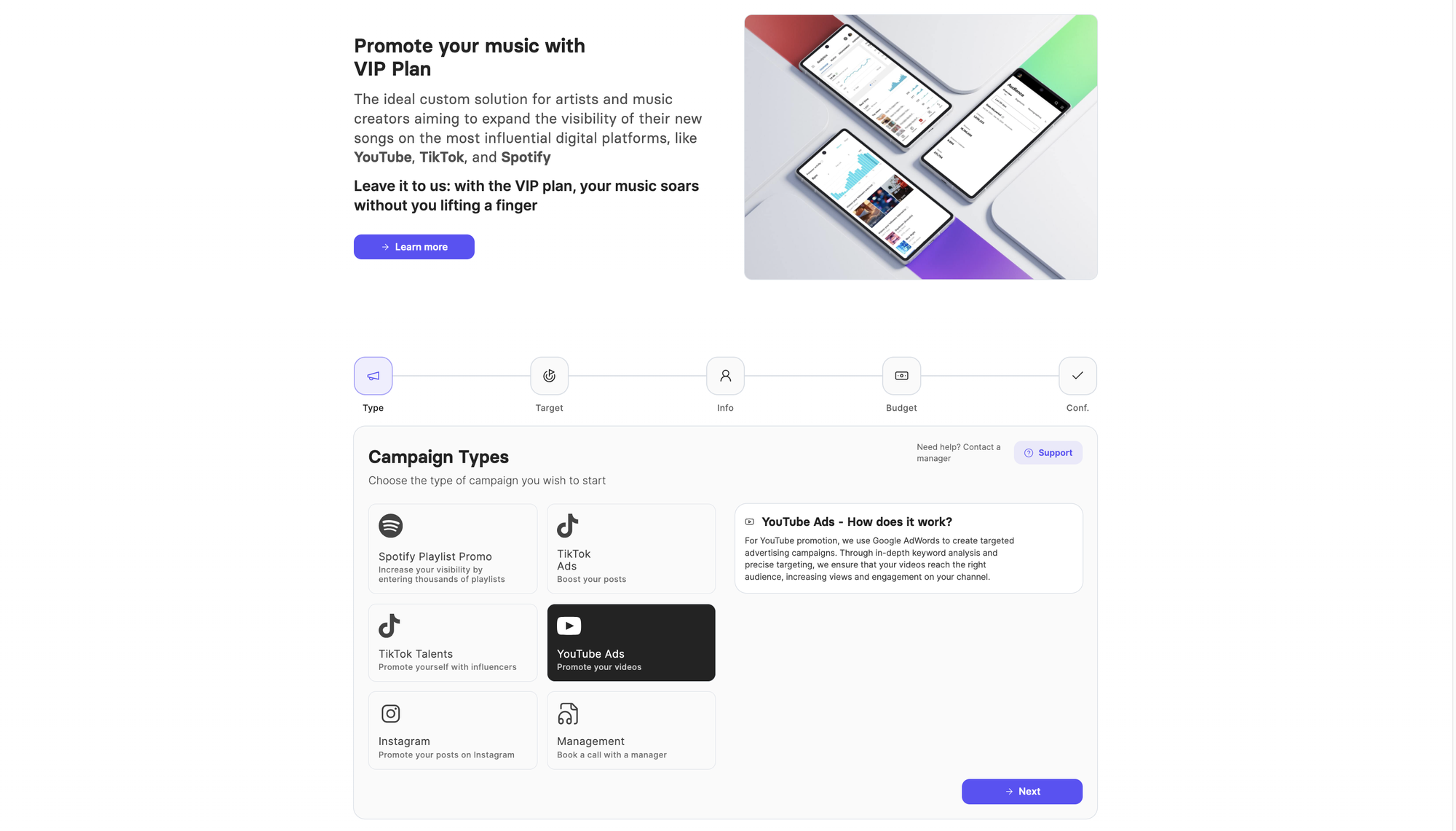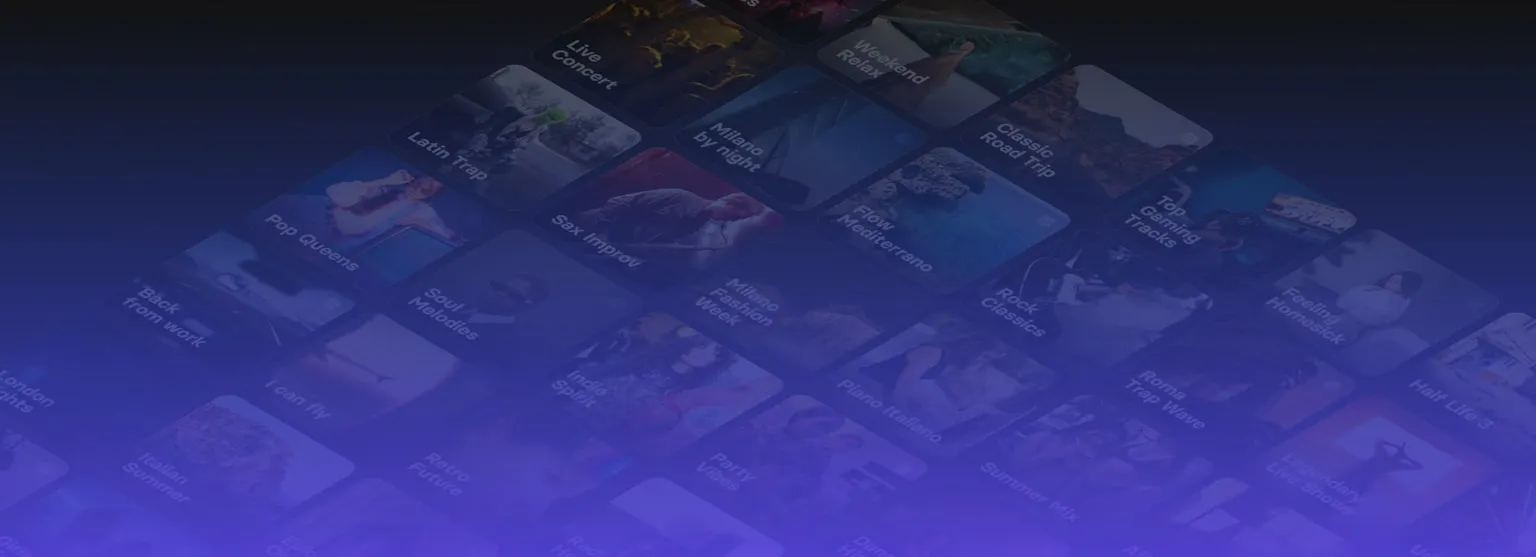
Running a record label isn’t just about releasing music, it’s about building a brand, telling stories, and connecting with fans on a consistent basis. Between signing new artists, handling distribution, managing contracts, and taking care of day-to-day operations, it’s easy for content creation to slip to the bottom of the list. But here’s the reality: without a steady online presence, even the best releases can get lost in the noise.
That’s where a sustainable content strategy comes in. Instead of constantly scrambling to think of what to post, a clear plan helps you stay organized, save time, and keep your label’s voice strong without overwhelming yourself. Think of it as creating a system where your content works for you, not the other way around.
In this article, we’ll break down how independent labels can create and maintain a content strategy that builds visibility, keeps fans engaged, and avoids the dreaded burnout.
What we're going to talk about:
- Why every label needs a content strategy
- Building the pillars of your content
- Organizing and planning your content
- Tools that make life easier
- Divide and conquer: sharing responsibilities
- Finding balance: consistency without burnout
Why every label needs a content strategy
When you’re an independent artist, the focus is mainly on your own story and releases. But as a label, you have to balance multiple narratives: your brand identity, your roster of artists, your latest projects, and even insights from the wider music industry. Without a strategy, it can quickly become messy or inconsistent.
A strong content strategy helps you:
- Build a recognizable online presence that makes your label stand out.
- Communicate your vision and values beyond the music itself.
- Stay consistent without feeling like you’re chained to your phone or computer.
- Create value for both fans and artists by sharing stories, behind-the-scenes moments, and updates.
In short, your content becomes more than just promotion, it becomes part of your label’s identity.
Don't you know how to create a proper social media campaign? Don't worry, we created a guide full of different strategies that may help you in 2025. Discover how by reading the full article on our blog.
Building the pillars of your content
A great way to simplify content planning is to establish content pillars. These are the core themes or categories that everything you post will fall under. They act like a roadmap, guiding you when you’re brainstorming ideas and helping your audience know what to expect.
Here’s how to define them:
Clarify your goals
Are you trying to attract more fans to your artists? Position your label as a trusted voice in the industry? Build partnerships? Your goals should shape the kind of content you prioritize.
Understand your audience
Who are you speaking to? Fans, artists, industry professionals or a mix of all three? Knowing their interests helps you create content that resonates instead of just fills space.
Pick 3–5 pillars
Too many categories will scatter your focus, while too few might feel repetitive. Aim for a small number of strong pillars that balance variety with clarity.
Examples of effective pillars for labels
- Artist spotlights: highlight releases, share studio sessions, behind-the-scenes footage, interviews, or personal stories.
- Behind the label: showcase your team, day-to-day operations, or your approach to running an indie label.
- Music industry insights: tips for independent artists, updates on trends, or commentary on changes in the industry.
- Announcements & events: release dates, concerts, milestones, or collaborations worth celebrating.
- Test and adjust: pay attention to what’s working. If your audience engages more with behind-the-scenes content than industry advice, lean into that. Flexibility keeps your content fresh and relevant.
By defining these pillars, you eliminate the stress of asking, “What should I post today?” Instead, you’ll always have a clear set of categories to draw from.

Organizing and planning your content
Once your content pillars are set, the next step is creating a system for planning and scheduling. Without structure, even the best ideas can fall through the cracks.
Here are some strategies that work well for indie labels:
- Theme your weeks or months: dedicate one week to artist highlights, another to label news, or use a monthly focus around a particular project or release.
- Assign content by day: for example, Monday could be for new music, Wednesday for industry tips, and Friday for behind-the-scenes moments.
- Batch your production: film multiple interviews, create a series of graphics, or schedule photo sessions in one sitting. This saves time and keeps your content pipeline full.
- Stay flexible: always leave room to jump on spontaneous opportunities like tour announcements, viral trends, or unexpected milestones.
A little planning goes a long way. Not only does it keep you organized, but it also helps reduce the pressure of “posting on the fly,” which is one of the fastest ways to burn out.
Tools that make life easier
Consistency doesn’t mean doing everything manually. With the right tools, you can streamline your workflow and focus more on creativity.
- Content calendar: whether you use Notion, Google Sheets, Trello, or a simple planner, a calendar is essential. Note down dates, platforms, content types, and which pillar each post belongs to.
- Scheduling tools: platforms like Buffer, Later, or Hootsuite allow you to plan and publish posts automatically across multiple channels.
- Color coding and labels: a quick visual system makes it easy to see which pillar a piece of content belongs to.
- Attachments and notes: include draft captions, images, or links directly in your calendar so everything is in one place.
Think of these tools as your digital assistant. They take care of the logistics so you can focus on storytelling.
Still wondering what kind of content to post? We’ve created a complete guide with real examples to help you craft engaging content and it’s available now on our blog!
Divide and conquer: sharing responsibilities
One of the biggest mistakes labels make is trying to have one person handle everything, from copywriting to graphics to analytics. If you’re lucky enough to have a team, even a small one, dividing responsibilities will lighten the load.
- Assign clear roles: decide who handles visuals, who writes captions, who monitors engagement, and who tracks results.
- Involve your artists: many artists love sharing their own behind-the-scenes content. Encourage them to send material that can be repurposed on the label’s channels.
- Set deadlines and checkpoints: this keeps everyone aligned and avoids last-minute scrambles.
Even if your team is small, sharing the workload makes content creation more sustainable and more fun.
Finding balance: consistency without burnout
At the end of the day, a content strategy isn’t about posting every single day or flooding your audience with updates. It’s about creating a rhythm that’s sustainable.
Here are some reminders to keep in mind:
- Quality beats quantity. It’s better to post two strong, engaging pieces of content per week than seven rushed ones.
- Repurpose what you already have. A behind-the-scenes video can be turned into short clips, quotes, or even a blog post.
- Remember your “why”. You’re not creating content just for the sake of it, you’re telling your label’s story, building connections, and supporting your artists.
When your system is clear, your pillars are defined, and your team is aligned, you’ll be able to keep up a strong online presence without running yourself into the ground.
Extra boost: promoting your music with Matchfy’s VIP Plan
While a well-structured content strategy keeps your label consistent and engaging, sometimes you need an extra push to make sure your releases reach the right audience. That’s where tools like Matchfy’s VIP Plan come in. This service is designed to help artists and labels promote music across social media platforms, increasing visibility and connecting with listeners who are most likely to engage.
For independent labels managing multiple artists, Matchfy’s VIP Plan can complement your content calendar by amplifying campaigns, giving your releases the attention they deserve, and saving time on outreach. It’s a smart way to combine organic storytelling with targeted promotion.

Final thoughts
Consistency is one of the most powerful tools an independent label can use to grow its brand. With the right content strategy, you don’t just stay visible, you create a lasting identity that resonates with fans, artists, and the wider industry.
By setting clear content pillars, organizing your workflow, using helpful tools, and sharing the load, you can show up online in a way that feels authentic and sustainable. No burnout required.
And when you’re ready to take things further, services like Matchfy’s VIP Plan can give your releases that extra visibility boost, ensuring your music connects with the right audience at the right time.

